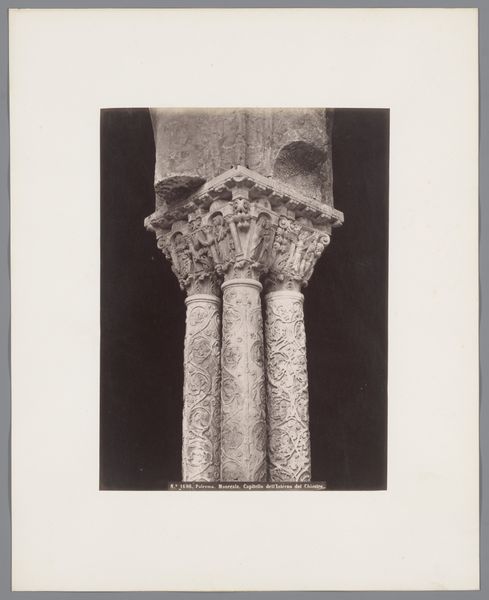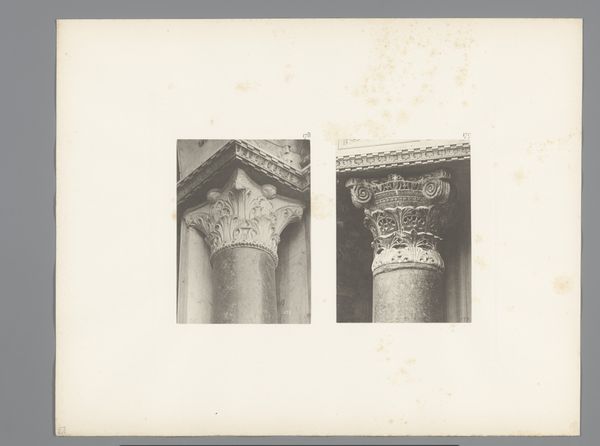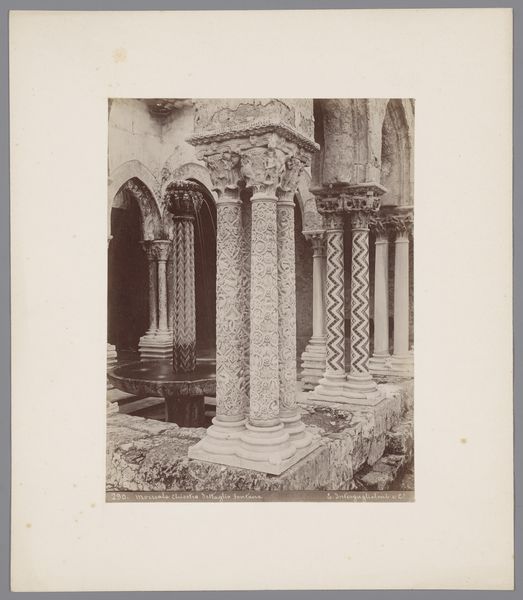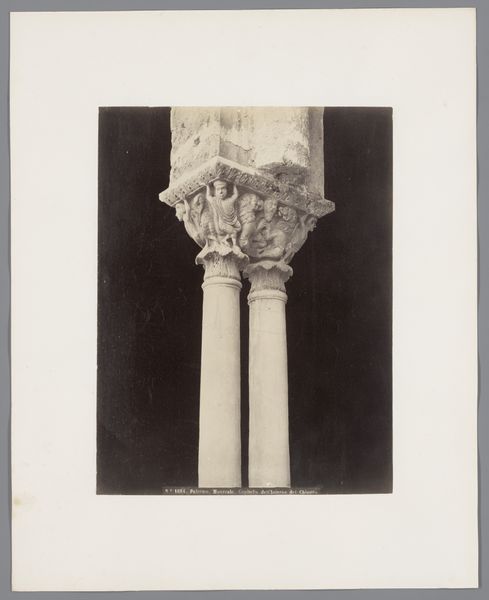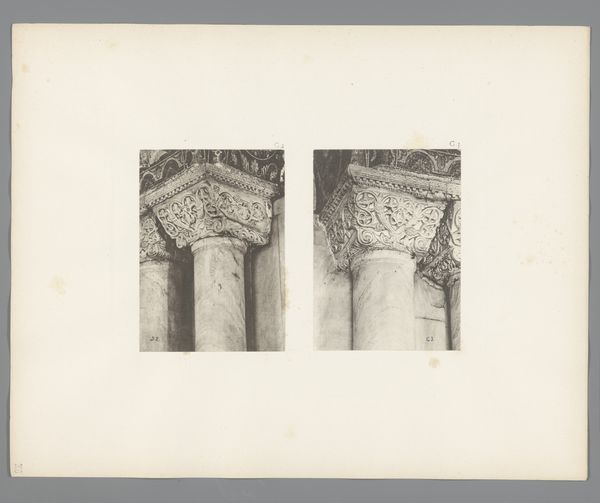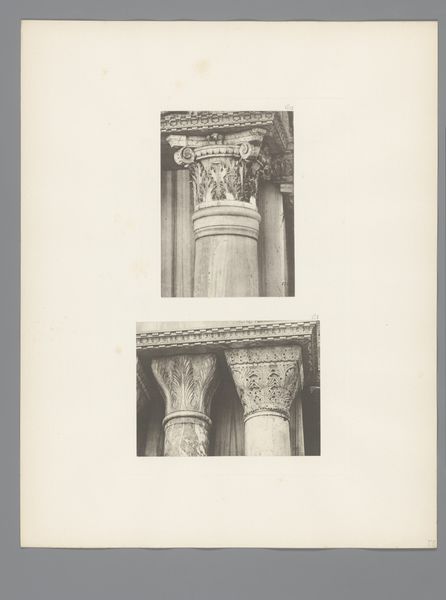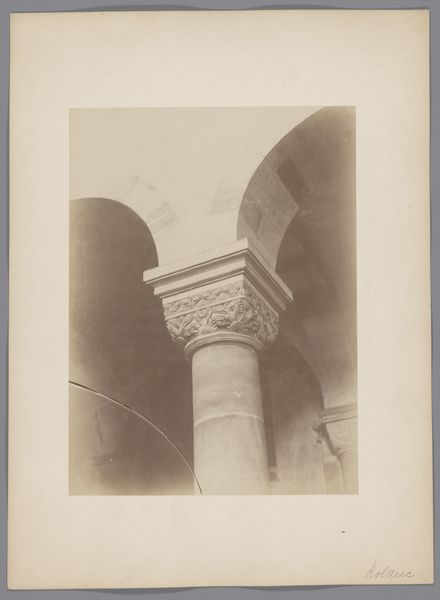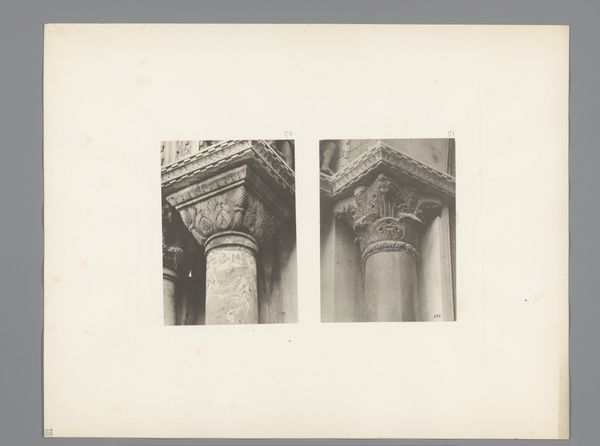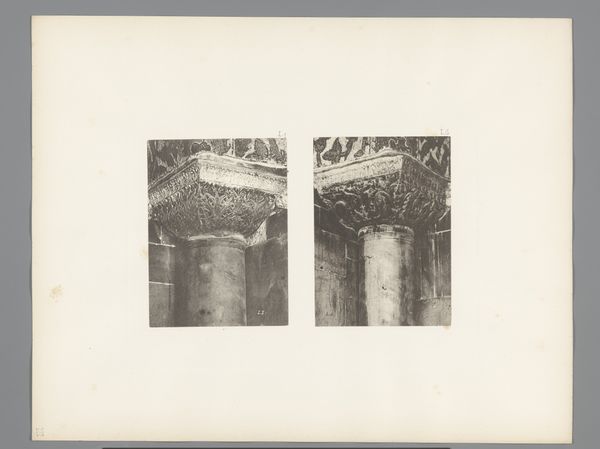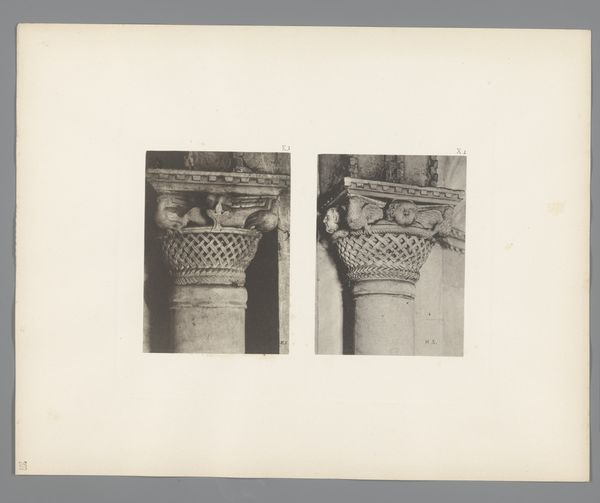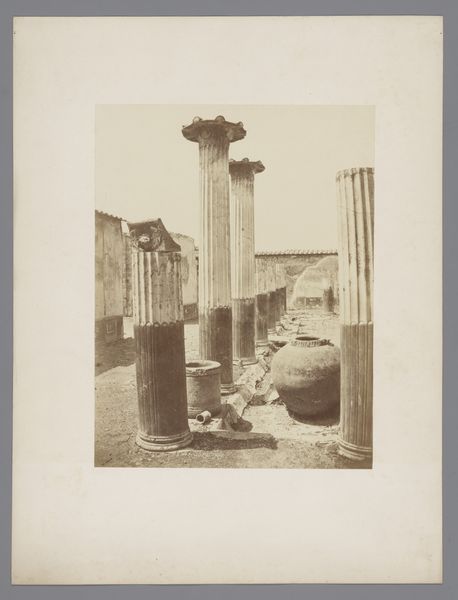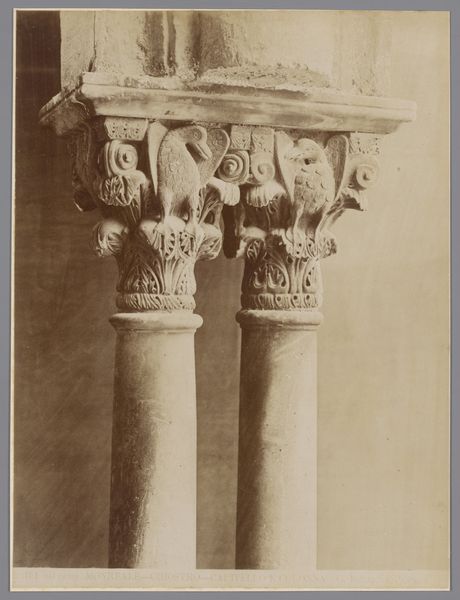
Zuilen in de kloostergang van de kathedraal van Monreale, Italië 1857 - 1914
0:00
0:00
giorgiosommer
Rijksmuseum
photography, gelatin-silver-print
#
landscape
#
form
#
photography
#
geometric
#
ancient-mediterranean
#
column
#
gelatin-silver-print
#
line
#
watercolor
Dimensions: height 385 mm, width 308 mm
Copyright: Rijks Museum: Open Domain
Curator: This gelatin silver print, titled "Zuilen in de kloostergang van de kathedraal van Monreale, Italië," was taken by Giorgio Sommer between 1857 and 1914. It presents a fascinating visual record of the cathedral's cloisters. Editor: It’s immediately striking how the composition emphasizes the textured surfaces. The grainy silver print almost exaggerates the relief work on those columns. You can almost feel the stone. Curator: Indeed. And those cloisters, built in the late 12th century, were themselves designed as powerful declarations of Norman Sicilian power, marrying diverse cultural influences. Sommer was very interested in ancient styles. Editor: Absolutely. Look at the level of detail captured here, think about the labor involved in creating the physical columns initially! We’re seeing the results of both medieval stonework and 19th-century photographic processes. How does the interplay between labor across centuries reshape how we view these ancient columns? Curator: A compelling point! The photographic process allows Sommer to present this specific view to a wider audience, transforming a somewhat private architectural space into something much more public and readily available. It shapes perceptions, solidifies the monument's legacy. Editor: I also keep coming back to materiality: the rough, earthy quality of the stone versus the smooth finish we might expect from later, mass-produced materials. You can really see the individual workmanship in each column. Curator: The repetitive geometric and floral motifs evoke ideas of paradise and religious devotion, especially given their setting in a cathedral cloister. Editor: I agree, the detail feels quite rich for what would otherwise be a simple support structure. The level of artisanal production becomes elevated when the columns become an integral part of this cathedral. It speaks volumes about the societal role this artwork was intended to hold. Curator: This work is powerful evidence of the ways in which images like this reinforce historical narratives. And its reproduction grants accessibility for public audiences. Editor: Precisely! I've learned so much about how deeply human creation influences something that may first appear only "historical" or "old." Thank you.
Comments
No comments
Be the first to comment and join the conversation on the ultimate creative platform.
